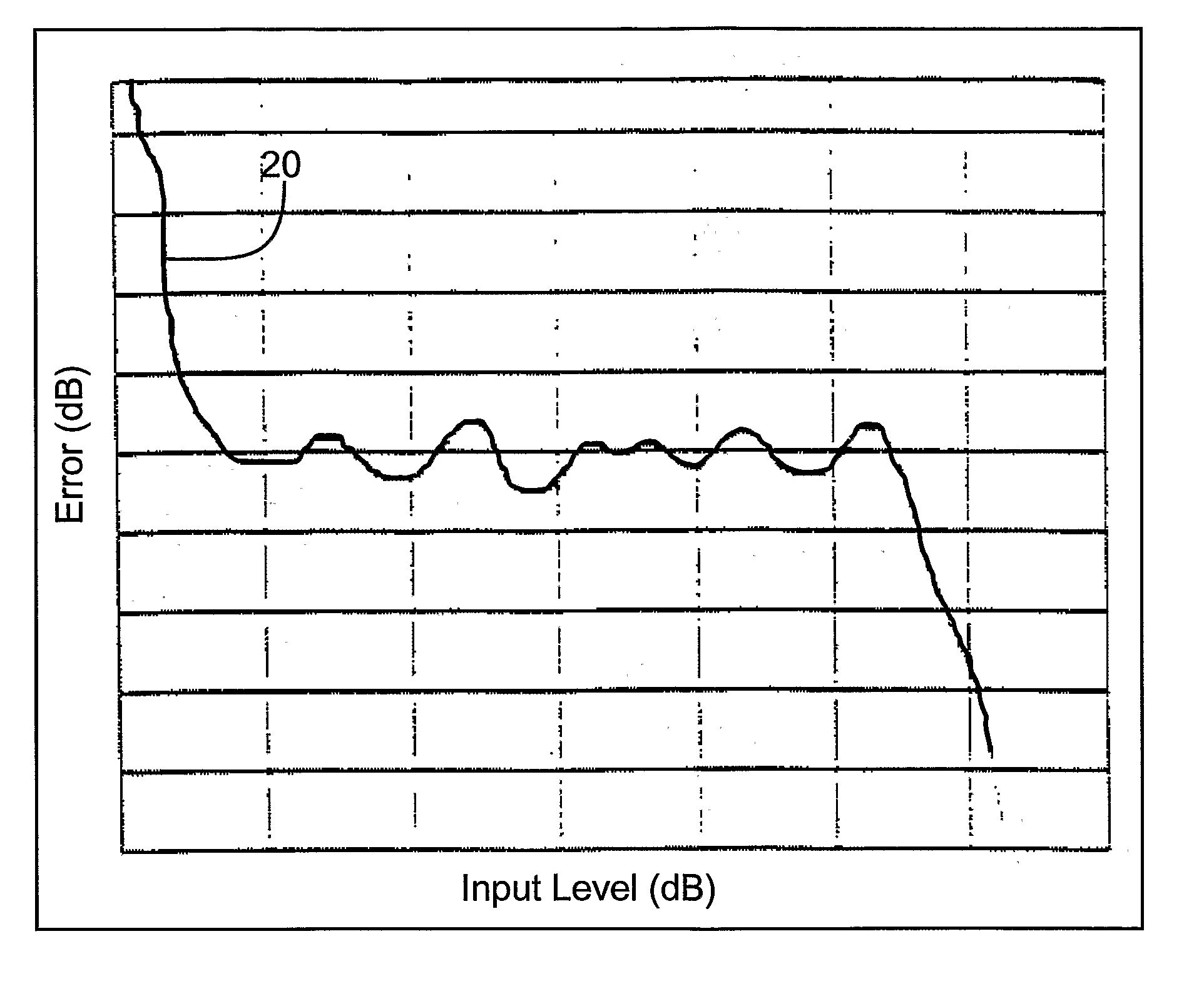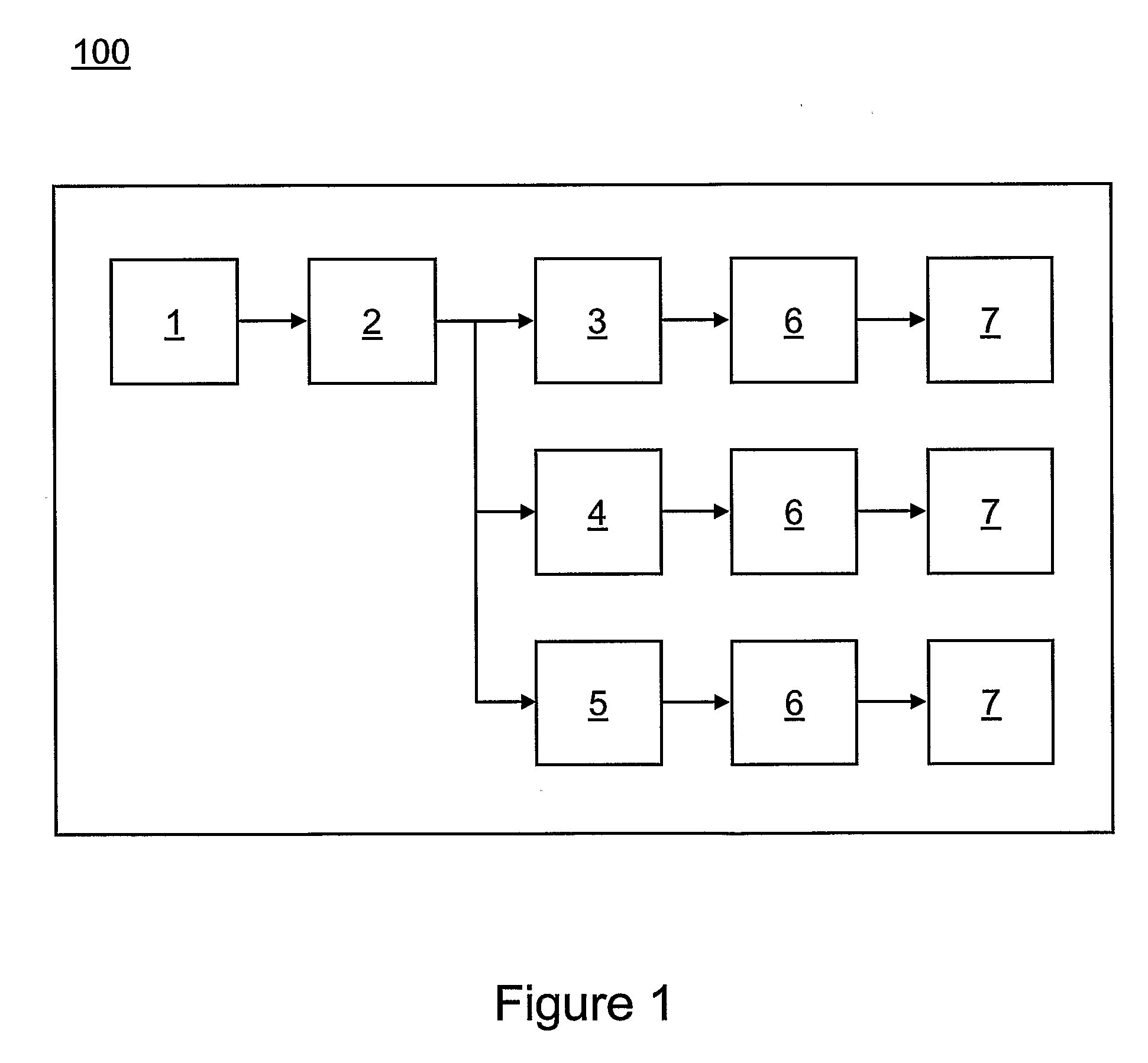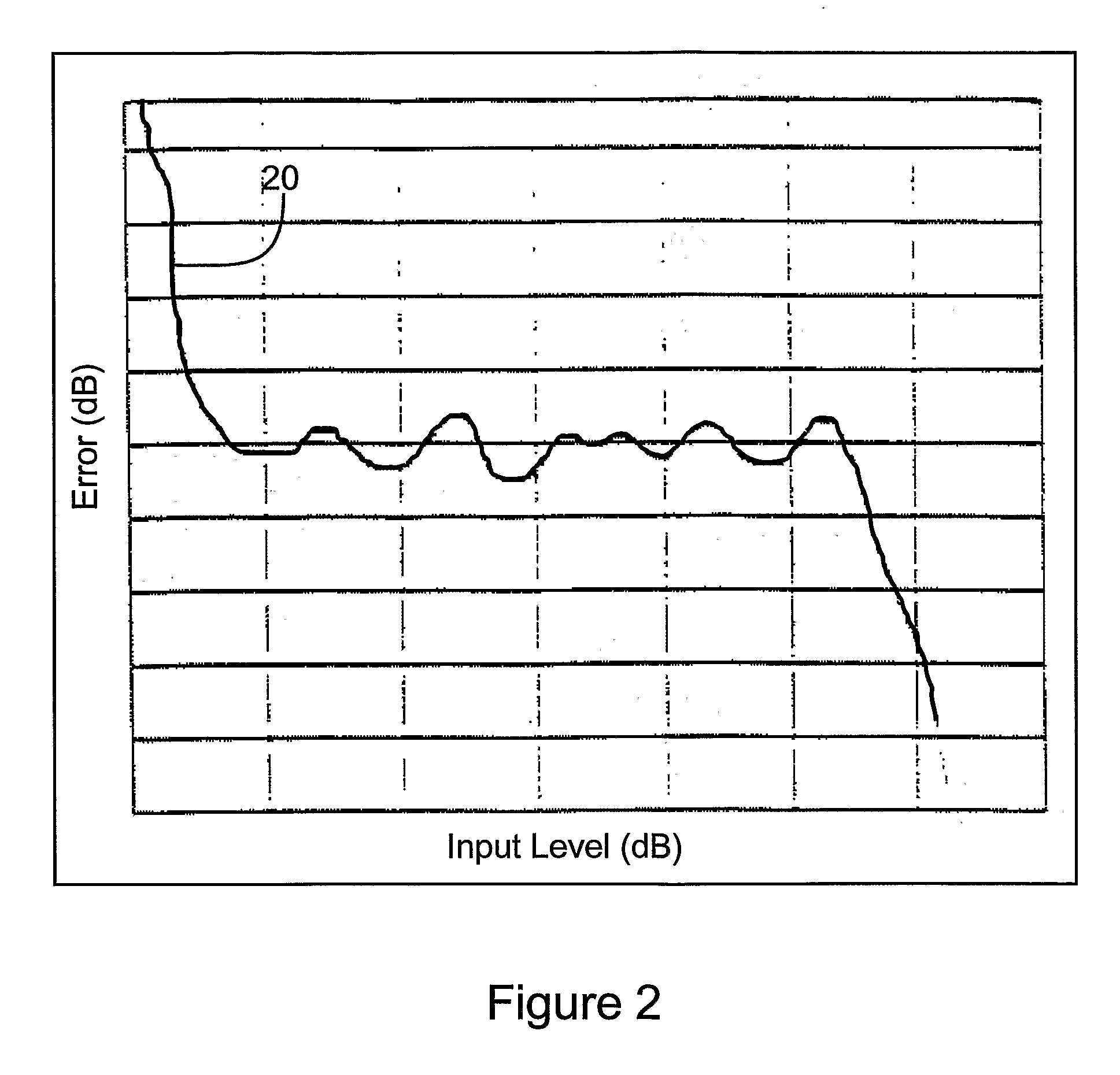System for high dynamic range analysis in flow cytometry
a flow cytometry and dynamic range technology, applied in the field of high dynamic range analysis in flow cytometry, can solve the problems of large magnitude of signals produced, many problems, and the inability of analog logarithmic amplifiers to achieve perfect transfer functions, and achieve high resolution requirements, accurate and precise measurement or characterizing the properties of input signals, and the effect of preventing the accumulation of slowly accumulating errors
- Summary
- Abstract
- Description
- Claims
- Application Information
AI Technical Summary
Benefits of technology
Problems solved by technology
Method used
Image
Examples
Embodiment Construction
[0029] The present invention includes a variety of aspects, which may be combined in different ways. The following descriptions are provided to list elements and describe some of the preferred embodiments of the present invention. These elements are listed with initial embodiments. However, it should be understood that they may be combined in any manner and in any number to create additional embodiments. The variously described examples and preferred embodiments should not be construed to limit the present invention to only the explicitly described systems, techniques, and applications. Further, this description should further be understood to support and encompass descriptions and claims of all the various embodiments, systems, techniques, methods, devices, and applications with any number of the disclosed elements, with each element alone, and also with any and all various permutations and combinations of all elements in this or any subsequent application.
[0030] As mentioned abov...
PUM
| Property | Measurement | Unit |
|---|---|---|
| optical measurements | aaaaa | aaaaa |
| DC voltage | aaaaa | aaaaa |
| wavelengths | aaaaa | aaaaa |
Abstract
Description
Claims
Application Information
 Login to View More
Login to View More - R&D
- Intellectual Property
- Life Sciences
- Materials
- Tech Scout
- Unparalleled Data Quality
- Higher Quality Content
- 60% Fewer Hallucinations
Browse by: Latest US Patents, China's latest patents, Technical Efficacy Thesaurus, Application Domain, Technology Topic, Popular Technical Reports.
© 2025 PatSnap. All rights reserved.Legal|Privacy policy|Modern Slavery Act Transparency Statement|Sitemap|About US| Contact US: help@patsnap.com



